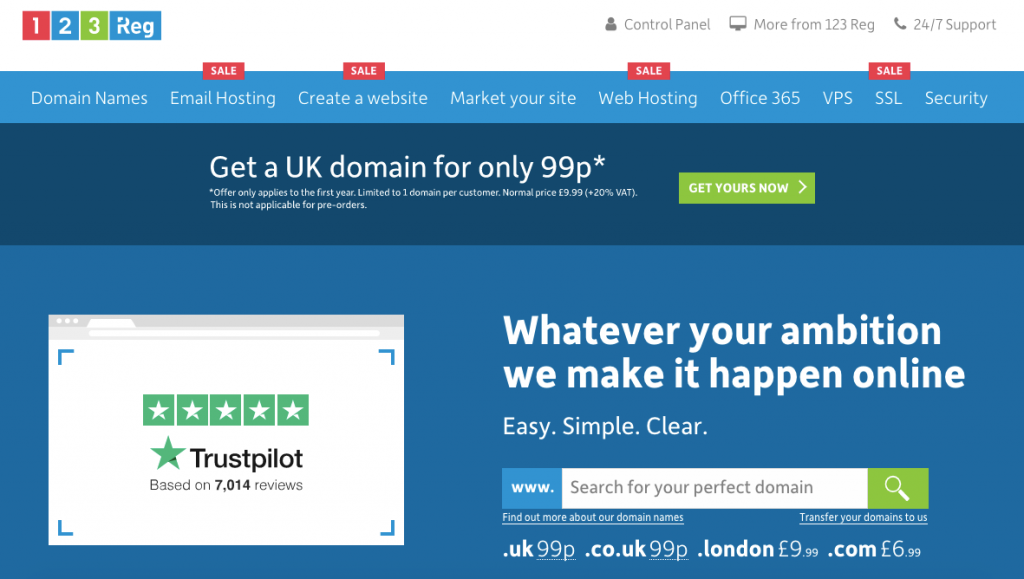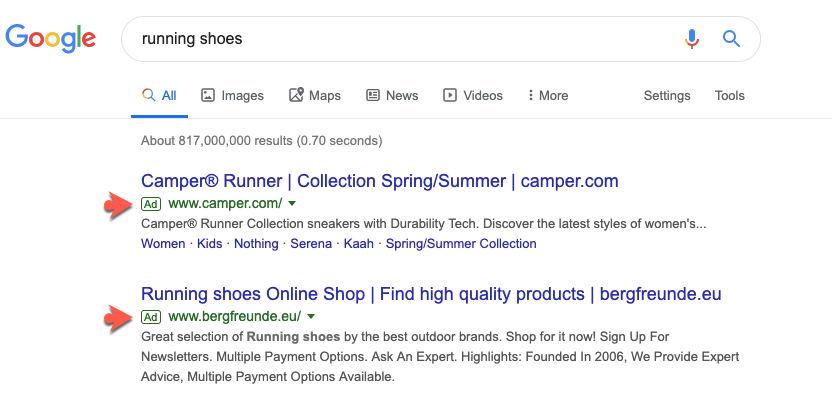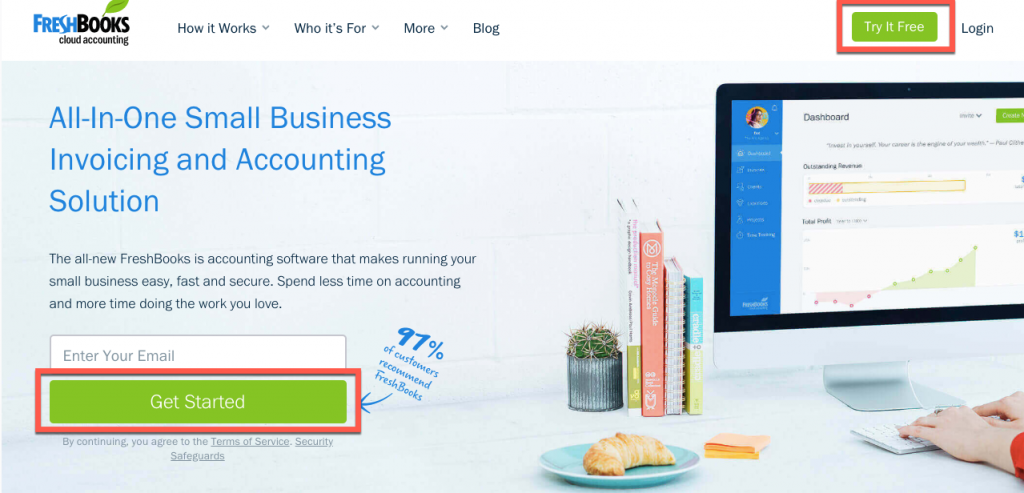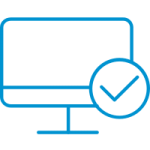Online marketing and advertising terms and acronyms you need to get familiar with
The digital world is full of marketing and advertising terms and acronyms like ROI, PPC, CTR, CTA, conversion rates, backlinks, and countless others.
If you’re just getting started online, it can feel overwhelming to read a blog post or watch a webinar and not be able to understand what all these terms mean. It can also become tiring and frustrating having to look up 15 or 20 terms every time you read an article or watch a video.
Here’s the thing: anyone can learn digital marketing. You just need to take some time to learn a few key terms that usually seem more complicated than they actually are.
Don’t feel you need to know every digital marketing term or acronym out there. There are just too many and lots keep popping up every day. Just make sure you understand the most important and commonly used ones.
That’s what this post is about – helping you to familiarise yourself with the key online marketing and advertising terms and acronyms so you’ll have an easier time reading through industry resources, understanding what they mean and how to apply the advice to help grow your small business.
One thing you can do is to bookmark this post so you can come back to it whenever you don’t understand a term in a blog post, webinar, email or ebook.
Ok, let’s get started.
Above the fold
This refers to the top area of a web page that’s visible before the user has to scroll. So, what should go above the fold on your site? Your key message and a call to action. This ensures that when a prospect lands on your site, they immediately know what your site is about and what you’re selling.
Here’s an example from our own 123 Reg website:

A/B testing
A/B testing, also called split testing, is a tactic used to compare two versions of an ad, web page or email subject line. This helps to determine which one is more effective at enticing people to perform a specific action like clicking, buying a product or subscribing to an email list.
The experiment works by splitting a group of people into two or more groups, exposing them to the different versions and then seeing which version gets a better response from the audience.
Related: The simple guide to getting started with A/B testing
Ads
Formerly known as Google AdWords, this is Google’s advertising platform that anyone can use to promote products and services on Google’s search engine results page (SERP), Google’s Display Network (GDN), and its affiliate sites.
With Google Ads, advertisers can create online ads that are displayed on Google’s SERPs at the precise moment when users are looking for the product or service you’re offering.
Here’s how ads look in the search results:

Analytics
Analytics refers to the process of collecting and analysing data about web traffic. This can include valuable information about your visitors’ behaviour on your site such as: where they come from, how much time they spend on your site, which pages they visit, how many click the “buy now” buttons, and more.
Why is this valuable? Because it can help you to determine which parts of your site are effective at drawing in customers and enticing them to buy, and which ones need to be improved.
These days, there are lots of applications and software for web analytics. But the most popular one, that’s also free, is Google Analytics. Make sure to sign up, if you haven’t already.
Backlink
A backlink, also called “inbound link” or “incoming link,” is any link on a website that points to another website. So the link to an external site is called a backlink.
Backlinks are important to your site’s visibility in the search engine results pages. Why? Because they’re like a vote of confidence that another site gives to your site.
Think of it as people talking about or recommending your business to their friends. The more people that talk about you, the more popular and trustworthy your business becomes.
Related: Getting backlinks the right way
Bounce rate
Bounce rate refers to the percentage of people who leave a web page on your site without visiting another page.
This is useful to know because it can tell you whether that web page is relevant to the people who visit it. If the bounce rate is high, it usually means there’s a problem with that page that needs fixing.
Related: Why visitors leave your site so quickly and how to get them to stay
Brand awareness
Brand awareness measures a potential customers’ ability to recall or recognise a brand, as well as to associate it with a certain product or service.
Broken link
A broken link is a link to a page that no longer exists. That usually happens when the page has been deleted, moved, or the URL has been changed.
When visitors click on a broken link, they’ll usually see a page with a ‘404 error page not found’ message.
It’s important to check and fix all your broken links to prevent a poor user experience on your site as well as any damage to your reputation and revenue.
Related: Why broken links can hurt your website and what to do about them
Buyer persona
A buyer persona is your ideal customer. This is a profile that every business needs to create to get an idea of what their potential customers are like, and what their needs, wants and desires are. This can then be used to create messages and offers that can motivate and entice prospects to buy.
Related: Why buyer personas are important and how to create yours
Click through rate (CTR)
The click through rate tells you how effective your ads, emails or web pages are. The percentage is calculated by dividing the number of people who click on an ad or a link on a page by the total number of people who have viewed your ad or web page.
Conversion
Conversion is a term that describes when a prospect takes the action you want them to take. That can be anything from signing up for your email newsletter, buying a product from your site, downloading an ebook or following you on Instagram.
Conversion rate
This is the percentage of people who have converted, or completed a desired action on a web page, such as purchasing a product or subscribing to a mailing list.
Related: Why conversion rates matter for your small business site (and how to improve them)
CTA
A call to action (CTA) is a message that’s meant to motivate website visitors to take the next step, whether that’s to join a mailing list or make a purchase. The most effective CTAs are in the form of buttons but you can also find them as text links or images.
Here’s an example:

Related: Why calls to action are the most important words on your small business website
Engagement rate
You’re probably seeing the terms “engagement” and “engagement rate” everywhere these days. Engagement rate refers to the percentage of people that interacts with your content, whether that’s a blog post or a Facebook status update.
The factors that influence engagement include clicks, opens, comments, shares, likes, reactions, and more.
So, for example, if you share an update on Facebook which is seen by 100 people out of which 25 like, share or comment on it, then that piece of content has an engagement rate of 25%.
Related: Six effective social media engagement strategies to try today
Hashtag
A hashtag is a word or a phrase preceded by the hash mark “#” and it’s used to organise and keep track of similar information around a specific topic.
Twitter and Instagram are the two most popular platforms where individuals and businesses make use of hashtags to tag content and increase the chances of other people finding in. In other words, you can use hashtags to make your posts easier to discover on social media.
Related: A beginner’s guide to hashtags and how to use them for your business
Impression
An impression occurs every time an ad is shown to a user, regardless of whether that user clicks on it or not.
Influencer
An influencer is someone who already has the attention of the audience you’re trying to reach with your products or services. Influencers can be anyone from journalists and industry experts to bloggers and people with large social media followings.
Related: A small business owner’s guide to building relationships with influencers
Keyword
A keyword is a term or a phrase that describes the content on a page. It’s the search term you want to rank for with a certain page. So when your prospects search for that keyword or keyword phrase on Google, they can quickly find that page in the search results.
Landing page
A landing page is the first page that a user ‘lands on’ when they visit your site. In paid ad campaigns, a landing page is created to entice prospects to take a specific action like: buy a product or a service, subscribe to a mailing list, download a checklist or sign up for a webinar.
Lead magnet
Also known as ‘content upgrade’, a lead magnet is a valuable piece of content that you give to prospects in exchange for their email address. This can be anything from a checklist to a whitepaper or a video tutorial.
Lead nurturing
This refers to developing a series of informative, educational or entertaining content, such as emails, videos, ebooks and social media messages, to keep prospects engaged while gradually gaining their trust and convincing them to buy from you.
Marketing automation
To save time, lots of business owners and marketers automate tasks such as social media posts, blog posts and emails. So rather than manually posting one or more social media updates every day, there are tools that you can use to schedule those posts to publish whenever you need to.
Related: What regular tasks can small business owners automate?
Meta description
The meta description is a piece of HTML code in the header of a web page that summarises the content found on that page.
While it’s not visible on the page, it can show up in Google’s search engine results pages as well as in previews when you share the link on social media. So make sure you write it in a way that compels users to click through to your page.
Here’s a good example:

Related: A beginner’s guide to writing title tags and meta descriptions that get clicks
Organic traffic
Organic traffic is the opposite of paid traffic, which refers to visits generated by paid ads. So ‘organic’ refers to any visitor who lands on your site after running a search on Google and clicking on an unpaid search result that leads to your site.
PPC
PPC stands for pay-per-click advertising and it refers to advertisers paying a specific amount each time one of their ads is clicked. PPC is an effective way to drive targeted traffic to your website as you only bid on keywords that are relevant to your business and offering.
Retargeting
Retargeting, also known as remarketing, is a form of online advertising that allows you to reach prospects who have already shown an interest in your business.
It works by keeping track of people who visit your site and then displaying your retargeting ads to them as they are visiting other sites or social media channels.
It’s probably been used on you, too. For example, say you run a search on Google for “plane tickets to Paris”, click on a search result and go to a website but leave without buying your ticket. The next minute you’re on Facebook and you see an ad where the same site you just visited is selling you plane tickets to Paris. That’s not a coincidence. It’s retargeting.
ROI
Return on Investment (ROI) is something you’ll hear and read about everywhere. That’s because it’s the most widely-used profitability indicator. It measures the profit or loss that you generate with your online marketing, based on the amount of money you invested.
SEO
Search engine optimisation (SEO) consists of a variety of tactics that can help to boost your site’s visibility in the search engine results pages. The goal is to make it easier for your target audience to find your business in the search results.
Social proof
Social proof refers to any piece of evidence or praise from other people that reinforces your promise or a claim that you made about your products or services.
This can be anything from positive ratings on review sites, praises on social media, industry experts or celebrities recommending your products or services, to having thousands of followers or fans on your social media profiles.
Related: Five ways to use social proof to boost sales
Wrapping up
These are just a few of the most important online marketing and advertising terms and acronyms that any small business owners should know and understand.
Why? Because it’ll make it easier for you to stay up-to-date with the latest online marketing trends. It will also help you to better understand your customers, how well your site is performing and what else you can do to get better results.








